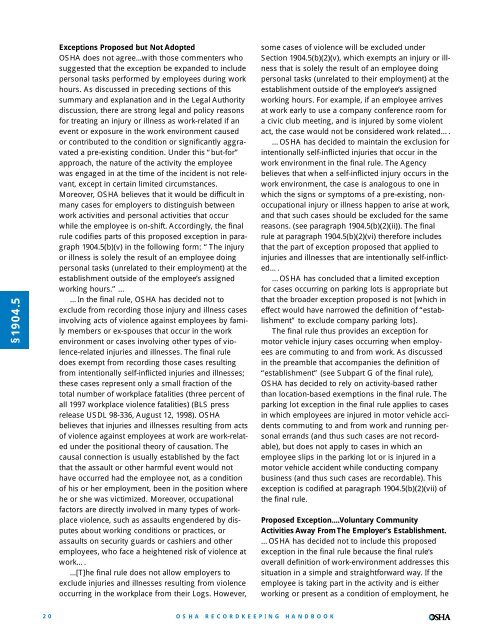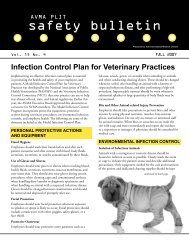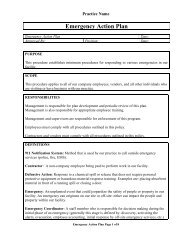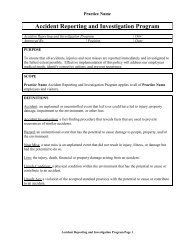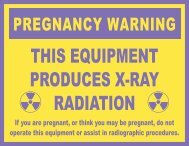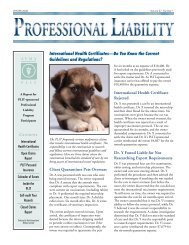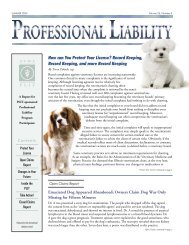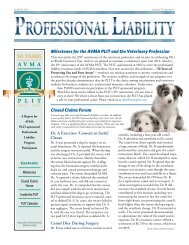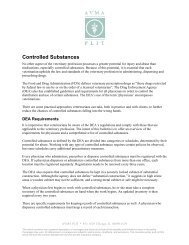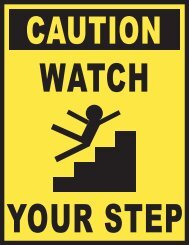OSHA Recordkeeping Handbook - denix
OSHA Recordkeeping Handbook - denix
OSHA Recordkeeping Handbook - denix
- No tags were found...
You also want an ePaper? Increase the reach of your titles
YUMPU automatically turns print PDFs into web optimized ePapers that Google loves.
§1904.5Exceptions Proposed but Not Adopted<strong>OSHA</strong> does not agree...with those commenters whosuggested that the exception be expanded to includepersonal tasks performed by employees during workhours. As discussed in preceding sections of thissummary and explanation and in the Legal Authoritydiscussion, there are strong legal and policy reasonsfor treating an injury or illness as work-related if anevent or exposure in the work environment causedor contributed to the condition or significantly aggravateda pre-existing condition. Under this “but-for”approach, the nature of the activity the employeewas engaged in at the time of the incident is not relevant,except in certain limited circumstances.Moreover, <strong>OSHA</strong> believes that it would be difficult inmany cases for employers to distinguish betweenwork activities and personal activities that occurwhile the employee is on-shift. Accordingly, the finalrule codifies parts of this proposed exception in paragraph1904.5(b)(v) in the following form: “The injuryor illness is solely the result of an employee doingpersonal tasks (unrelated to their employment) at theestablishment outside of the employee’s assignedworking hours.” ……In the final rule, <strong>OSHA</strong> has decided not toexclude from recording those injury and illness casesinvolving acts of violence against employees by familymembers or ex-spouses that occur in the workenvironment or cases involving other types of violence-relatedinjuries and illnesses. The final ruledoes exempt from recording those cases resultingfrom intentionally self-inflicted injuries and illnesses;these cases represent only a small fraction of thetotal number of workplace fatalities (three percent ofall 1997 workplace violence fatalities) (BLS pressrelease USDL 98-336, August 12, 1998). <strong>OSHA</strong>believes that injuries and illnesses resulting from actsof violence against employees at work are work-relatedunder the positional theory of causation. Thecausal connection is usually established by the factthat the assault or other harmful event would nothave occurred had the employee not, as a conditionof his or her employment, been in the position wherehe or she was victimized. Moreover, occupationalfactors are directly involved in many types of workplaceviolence, such as assaults engendered by disputesabout working conditions or practices, orassaults on security guards or cashiers and otheremployees, who face a heightened risk of violence atwork…....[T]he final rule does not allow employers toexclude injuries and illnesses resulting from violenceoccurring in the workplace from their Logs. However,some cases of violence will be excluded underSection 1904.5(b)(2)(v), which exempts an injury or illnessthat is solely the result of an employee doingpersonal tasks (unrelated to their employment) at theestablishment outside of the employee’s assignedworking hours. For example, if an employee arrivesat work early to use a company conference room fora civic club meeting, and is injured by some violentact, the case would not be considered work related….…<strong>OSHA</strong> has decided to maintain the exclusion forintentionally self-inflicted injuries that occur in thework environment in the final rule. The Agencybelieves that when a self-inflicted injury occurs in thework environment, the case is analogous to one inwhich the signs or symptoms of a pre-existing, nonoccupationalinjury or illness happen to arise at work,and that such cases should be excluded for the samereasons. (see paragraph 1904.5(b)(2)(ii)). The finalrule at paragraph 1904.5(b)(2)(vi) therefore includesthat the part of exception proposed that applied toinjuries and illnesses that are intentionally self-inflicted….…<strong>OSHA</strong> has concluded that a limited exceptionfor cases occurring on parking lots is appropriate butthat the broader exception proposed is not [which ineffect would have narrowed the definition of “establishment”to exclude company parking lots].The final rule thus provides an exception formotor vehicle injury cases occurring when employeesare commuting to and from work. As discussedin the preamble that accompanies the definition of“establishment” (see Subpart G of the final rule),<strong>OSHA</strong> has decided to rely on activity-based ratherthan location-based exemptions in the final rule. Theparking lot exception in the final rule applies to casesin which employees are injured in motor vehicle accidentscommuting to and from work and running personalerrands (and thus such cases are not recordable),but does not apply to cases in which anemployee slips in the parking lot or is injured in amotor vehicle accident while conducting companybusiness (and thus such cases are recordable). Thisexception is codified at paragraph 1904.5(b)(2)(vii) ofthe final rule.Proposed Exception....Voluntary CommunityActivities Away From The Employer’s Establishment.…<strong>OSHA</strong> has decided not to include this proposedexception in the final rule because the final rule’soverall definition of work-environment addresses thissituation in a simple and straightforward way. If theemployee is taking part in the activity and is eitherworking or present as a condition of employment, he20<strong>OSHA</strong> RECORDKEEPINGHANDBOOK


